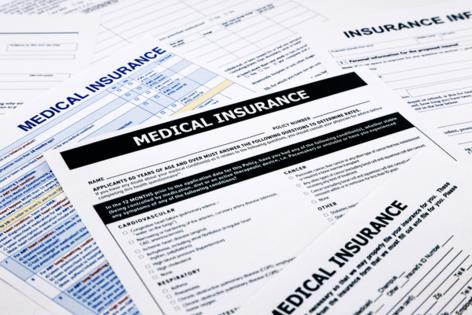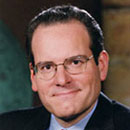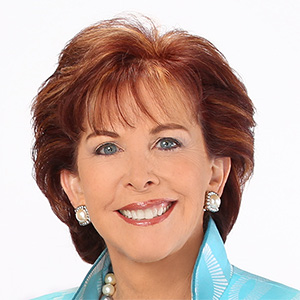'This is not a bill': How to decipher explanations of benefits and pay for your medical care
Published in Business News
Bobbie Putman-Bailey knows how to solve problems when it comes to medical bills and health insurance.
In one instance, upon the surprise realization her specialist doctor had gone out of network for her health plan, the 42-year-old Maple Grove, Minnesota, resident convinced the insurer to overturn coverage denials that could have cost her hundreds of dollars. The key, Putman-Bailey said, was to write an appeal that was long on details, while also agreeing to eventually switch to an in-network doctor — just not immediately, since she was beginning a new treatment at the time.
In another case, she wrangled with a specialty pharmacy to prevent billing for a shipment of the wrong medication to her house. It helped, Putman-Bailey said, that she was prompt in calling to report the problem and already had talked with the pharmacy several times about ambiguities with its online ordering system.
For consumers, the first step in all such disputes is to stay on top of billing documents, Putman-Bailey advised, and ask questions as soon as possible. She recognizes, of course, this can be easier said than done.
“It sucks because you are sick, and you’re chronically ill, and there are days when ... you don’t have the energy to get up and look at things,” said Putman-Bailey, who has Crohn’s disease. “But if you wait until things show up in your mailbox, it’s almost too late.”
Getting sick in the U.S. health care system can trigger an avalanche of confusing paperwork. Here’s what you need to know about how to read a medical bill — plus those documents proclaiming “This Is Not a Bill” from health insurers — to help prevent the illness from spreading to your bank account.
Bills vs. EOBs
Two types of documents typically arrive in a patient’s mailbox and/or online portal after receiving health care services: One is a medical bill from a doctor’s office or health system, the second is an“explanation of benefits” form from your health insurer.
The insurance document, called an EOB, often arrives first. It reflects the health plan’s evaluation of the service received, including the amount of insurance coverage for the service, according to the Minnesota Council of Health Plans, a trade group for nonprofit health insurers in the state.
EOBs typically list the provider’s charge for a service. They also show the negotiated price the insurance company and provider agreed to consider full payment. And then, the form shows how the negotiated cost will split between the insurer and the patient.
Insurers typically describe this split as “cost-sharing,” which factors in deductibles and co-insurance that are key for patients to understand when shopping for a health plan.
“If there is a remaining bill, the doctor’s office directly sends you a bill for the remaining amount,” said Lucas Nesse, chief executive of the Minnesota Council of Health Plans, via email. “If the amount on the bill you receive from your doctor’s office does not match the amount on your EOB, the first step is to call your clinic to see if they have updated their bill to reflect payment from your insurance.”
Patients often notice on EOBs the contrast between the health care provider’s charge and the negotiated payment rate because the discounts can be very large.
“You can see them allow only 10% of the charge sometimes,” said Bill Foley, an insurance advocate and volunteer leader with Cancer Legal Care, a nonprofit group in Oakdale. “The spread can be tremendous.”
Once the bill comes from the doctor’s office or health system, patients should compare the amount due with the EOB to make sure they agree on the patient’s financial responsibility. When they don’t match, patients should call the health care provider and/or health insurer.
“Typically, your medical bill should not be more than what your explanation of benefits says you owe,” said Julia Dreier, the deputy commissioner of insurance at the Minnesota Department of Commerce.
Starting Oct. 1, a new state law goes into effect that lets patients request a review from their health care provider to check the accuracy of medical codes used in their billing. The law prohibits providers from making further collection efforts during this process, which culminates in a notice sent to patients within 30 days of the review’s completion.
“A medical provider will always ... provide notice about whether the coding was accurate,” said Joe Schindler, vice president of finance policy and analytics at the Minnesota Hospital Association.
Comparing EOBs and medical bills can be difficult when health care providers practice “global billing” and roll all charges into one final bill, said Eric Ellsworth, director for health data strategy at Consumers’ Checkbook Health. Schindler of the Hospital Association noted patients can always ask for a more detailed bill from their health care provider.
Denials and codes
Consumer advocates say patients, in many ways, are better off relying on their online portals for billing documents rather than paper statements that arrive in the mail. That’s because a health insurer’s decision on whether to pay or deny a claim can change as more information becomes available.
Foley recommends, in fact, patients compare the bill they receive in the mail to the online version to see if that one is more current.
When there’s a balance due, the key question is: Why?
“Is it because insurance hasn’t adjudicated your claim yet?” Foley asked. “Is it because you have a legitimate out-of-pocket expense? Is it due to a denial?”
There are several types of denials, Ellsworth said. Some services just aren’t a covered benefit, he added, pointing to in-vitro fertilization as an example in a number of health plans. Sometimes there’s a limitation patients might not have appreciated, such as when an insurer will pay for cataract surgery but not some multifocal lenses.
Insurers might deny a claim because the health plan deems the service not medically necessary. Some denials result in financial responsibility for patients, Ellsworth said, while others create a financial risk for the health care provider.
The Minnesota Council of Health Plans said insurers list on the EOB a “reason code” to explain the reason for a claim’s denial. Reasons can vary from services being out of network to the lack of prior authorization from a health plan.
It’s not clear exactly how often denials happen across all types of insurance, but consumer advocates say appeals are few and far between. They worry the process of filing appeals is just too confusing and/or difficult for patients to navigate.
To appeal a denied claim, patients must navigate the language of medical coding, which is how health care providers and health insurers communicate about the services provided. Many medical bills and EOBs don’t actually include these codes, so patients must contact either their provider or health plan to understand. Patients can then use the codes and descriptions to determine whether their insurer processed their claims correctly according to their plan’s benefits.
“If there’s a balance due that you’re questioning, then it’s really important to know those codes,” Foley said. “We’ve set up this system where all of these claims are handled by computers now instead of people. So, the codes are really key. That’s the magic.”
When facing big bills for out-of-network care, patients should explore whether the federal No Surprises Act provides any help. And advocates say rather than trying to navigate all this alone, patients should seek help from a friend, family member or even government agencies.
“If someone’s stuck, I would encourage people to call us,” said Dreier of the Commerce Department.
‘I’m not trying to duck the bill’
The Minnesota Attorney General’s Office has online tips for handling medical bills and pointers for ensuring your portion is accurate. The state Commerce Department has online information about denials and appeals. Ellsworth of Consumers’ Checkbook said people in “self-insured” health plans that large employers typically run — especially those operating in multiple states — can seek help from the Employee Benefit Services Administration (EBSA) at the U.S. Department of Labor.
Some advocates refer to a book called “Never Pay the First Bill” when talking about how consumers should think about questionable medical bills. Patients often want to pay promptly, Foley said, either because they received good care or from fear of being sent to collections and suffering credit score dings.
Those are good instincts, Foley said, yet there are times when he advises consumers to let everything play out a bit before making a payment.
“The key is: Just keep the provider in the loop. Let them know that you are aware that they’ve sent you a balance-due statement but that you’re still working through the details of it,” he said. “Make sure you are staying in contact with your provider and telling them: ‘Hey, I’m not trying to duck the bill.’ That’s really an important thing.”
Putman-Bailey, the patient from Maple Grove, said to be suspicious if any medical paperwork is delayed since that can be a sign of trouble.
The Minnesota Medical Association said providers must submit claims to insurance companies within six months of the date of service, although most are quicker. Insurers generally pay claims within 30 days of receipt, the Medical Association said, and EOBs are available when claims process.
As for phone calls, Putman-Bailey said she’s learned the importance of recording the date of the conversation, the name of the customer service representative and the agent’s phone number, if possible. Another tip: When insurers assert a service is not medically necessary, Putman-Bailey asks to talk with the physician who made that decision.
The process can feel adversarial and is often emotional, Putman-Bailey said, but she always tries to stress how it’s not personal.
“I usually am saying to the person on the phone: ‘This is not about you,’” she said, “‘this is about the system.’”
©2024 The Minnesota Star Tribune. Visit at startribune.com. Distributed by Tribune Content Agency, LLC.












Comments